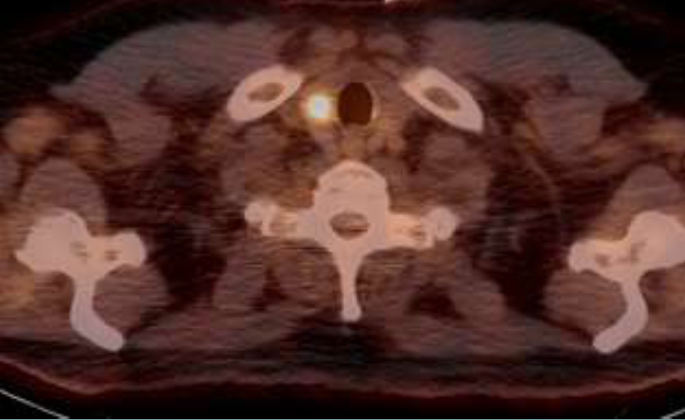
Radiation oncology research received 197 grants, totaling only 1.6 percent ($85.5 million) of the $5.4 billion in cancer research funding from the National Institutes of Health (NIH) in Fiscal Year (FY) 2013, according to a study available online and in the June 1, 2013, print issue of the International Journal of Radiation Oncology • Biology • Physics (Red Journal), the official scientific journal of the American Society for Radiation Oncology (ASTRO).
The study reviewed the more than 50,000 grants funded by the NIH, totaling $30.9 billion. Investigation revealed 952 active individual grants in the fields of diagnostic radiology and radiation oncology at the start of FY 2013; the NIH database does not discriminate between the two departments. Additionally, study authors conducted a manual identification process of proposals from radiation oncology departments, yielding 197 grants in radiation oncology. Of the 197 grants in radiation oncology, 79.2 percent (156) were in the field of radiation oncology biology; 13.2 percent (26) were in the field of medical physics as it relates to radiation oncology; and only 7.6 percent (15) were clinical investigations of radiation oncology treatment. Forty-three academic institutions were represented in the total 197 studies, with 141 grants in year 1?5 of their funding cycle, and 56 awards in funding year 6?25.
The Accreditation Council for Graduate Medical Education lists 87 academic programs in radiation oncology in the U.S., yet only 49.4 percent have an active research program supported by NIH grants. Academic radiation oncology departments attract the highest percentage of MD/PhD graduates into its residency programs, representing the top tier of medical school graduates. Data from the 2011 National Resident Matching Program report indicates that there are 75 academic radiation oncology programs in the United States for only 155 radiation oncology physician residency positions.
This study also provides detailed analysis of the average award size, the professional degree status of the grantees, and which grant funding mechanism within the NIH (RO1, U19, PO1, R21, KO1 and U24) received the most applications and grants awarded.
"Nearly two-thirds of cancer patients receive radiation therapy as part of their cancer treatment protocol, yet only 1.6 percent of cancer research funding is in the field of radiation oncology. We have a significant disparity in the current level of research support as compared to the relevance of radiation oncology for cancer patients and its highly skilled work force," said lead study author Michael L. Steinberg, MD, FASTRO, chair of the department of radiation oncology at the David Geffen School of Medicine at the University of California, Los Angeles (UCLA), and the Jonsson Comprehensive Cancer Center at UCLA. "Our study indicates an urgent need to separate radiation oncology data from radiology in the NIH database. It is also essential that radiation oncology receive more substantial funding support so that we, as an integral specialty in cancer care, can continue to improve patient survival and treatment outcomes."
"In the U.S., nearly one million cancer patients are treated each year with lifesaving radiation therapy," said Colleen A. F. Lawton, MD, FASTRO, president of ASTRO and professor, program director and vice-chairman of radiation oncology at the Medical College of Wisconsin in Milwaukee. "We must secure increased research funding to ensure advancement in radiation oncology techniques and protocols."
In addition to Steinberg, study authors include William H. McBride, PhD, DSc, Erina Vlashi, PhD, and Frank Pajonk, MD, PhD, in the department of radiation oncology at the David Geffen School of Medicine at UCLA and the Jonsson Comprehensive Cancer Center at UCLA.
In an editorial, also published in the June 1, 2013 issue of the Red Journal, Reshma Jagsi, MD, DPhil, and Lynn D. Wilson, MD, MPH, FASTRO, detail several priority areas for research in radiation oncology and raise concern for the long-term negative effects of insufficient research funding on patients and professionals. "The data Steinberg and colleagues were able to collect suggests that a critically important field is receiving a surprisingly tiny sliver of the too-small pie of biomedical research funding." Drs. Jagsi and Wilson conclude, "This pattern is likely to be self-reinforcing—to the peril of patients and society in general—and it merits both attention and action."
Jagsi and Wilson note that several priority areas for research have been identified in a study conducted by the Radiation Oncology Institute, including quality and safety of radiation delivery, communication, survivorship and toxicity management, comparative effectiveness and value of radiation therapy, including comparison of outcomes after radiation with outcomes after other treatments and among different forms of radiation treatment.
Dr. Jagsi is an associate professor in the department of radiation oncology and Center for Bioethics and Social Sciences in Medicine at the University of Michigan in Ann Arbor, Mich., and Dr. Wilson is professor and vice chairman of the department of therapeutic radiology at Yale University School of Medicine in New Haven, Conn.


 August 09, 2024
August 09, 2024 








